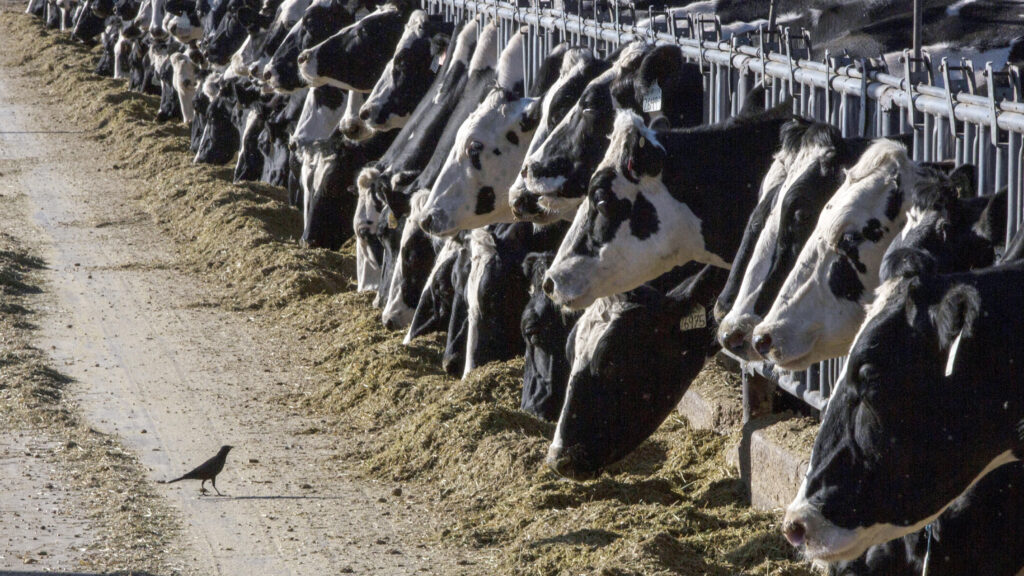Texas health officials reported Monday that an individual who had been in contact with cattle has contracted H5N1 avian flu, only the second case ever recorded in the U.S.
The person had contact with dairy cattle that are believed to have been infected with the virus, the Texas Department of State Health Services said in a statement. It went on to say that the individual’s only symptom is eye inflammation — infection of the conjunctiva, the tissue surrounding the eye.
advertisement
Nirav Shah, principal deputy director of the Centers for Disease Control and Prevention, said the infected individual is doing well and is being treated with the influenza antiviral oseltamivir, sold as Tamiflu. The individual was instructed to isolate to reduce the risk of infecting others, and to date there’s no indication of onward spread, Shah said.
“We are not aware of reports that any of this individual’s close contacts have developed any symptoms,” he told STAT.
The person was tested late last week, with confirmatory testing taking place at the CDC over the weekend. The CDC is not currently running any other confirmatory H5 tests, Shah said. “The fact that there are not other samples cooking right now is reassuring, insofar as that we’re not aware of other individuals who are symptomatic following an exposure to livestock,” he added.
advertisement
“We are still out there looking, to be very clear,” he said. “Our antennae are up and we have been working with state public health officials in a number of jurisdictions to look for individuals who report signs and symptoms of illness, to make sure they know how to get tested.”
Three states — Texas, Kansas, and Michigan — have recently reported they have had confirmed H5N1 outbreaks in cattle; New Mexico and Idaho have also reported outbreaks in cattle that are presumed to have been caused by H5N1. The virus doesn’t kill the cattle, but milk production is lowered and the animals’ feeding is reduced.
Owners of implicated herds have been told to destroy milk produced by infected cattle, though if milk from infected animals made its way into the food chain, pasteurization could kill the virus, the CDC statement said.
Up until now, cows have not been on the ever-lengthening list of animals that have been known to be susceptible to this virus. Infections of the highly pathogenic bird flu — a term that describes how it behaves in poultry — have been detected in many other mammals, though, including big cats, bears, foxes, skunks, sea lions, and seals.
Despite the alarming increase in the past few years of the virus’s geographic range and the number of species it has been seen to infect, both the World Health Organization and the CDC currently assess its risk to people as low. The news of the case in Texas does not change that, Shah said.
H5N1 bird flu has been high on the worry list of experts on emerging diseases for the past two decades. Over that time there have been nearly 900 human infections in 23 countries; just over half of those infections have been fatal. But in recent years the strain of the virus circulating in many parts of the world — including the United States — seems to trigger human infections less frequently than earlier versions of the virus did. And when human cases caused by this strain occur, they are typically mild.
A case in point was the country’s first H5 infection, which occurred in 2022. A man who was involved in culling infected poultry in Colorado reported feeling fatigued; he tested positive for the virus. It was unclear if he was actually even infected or simply had viruses in his nose that were picked up by a nasal swab test.
The low rate of human infections and the mildness of most cases when they occur has counterbalanced concern about the virus’s astonishing spread. But people who have studied influenza — and this virus in particular — for years do not know what to make of its movement into so many different animal species.
Richard Webby, an influenza virologist who heads the WHO Collaborating Center for Studies on the Ecology of Influenza in Animals at St. Jude Children’s Research Hospital in Memphis, Tenn., called the infections in cows “a head scratcher,” saying he would not have figured cattle to be on the list of animals susceptible to this virus.
“This particular version of H5 is teaching us a number of things we thought we knew weren’t right,” Webby said. He termed the news of the Texas case “not unexpected, but always a concern.”
Michael Osterholm, director of the University of Minnesota’s Center for Infectious Diseases Research and Policy, said the move into cows expands the virus’ range, “but I’m not sure what it portends for humans and swine.”
Osterholm said he would be more concerned if there were word that the virus had been found to be infecting pigs. Pigs can be infected with human and avian flu viruses and co-infection of more than one type of virus in pigs can produce reassortants — hybrid viruses that might be more able to infect people.
As of now, he believes the risk H5N1 poses is not changed by the infection of cattle.
“This all could change in a heartbeat with additional mutations. But there’s no evidence this virus has changed,” Osterholm said.
This story has been updated with comments from CDC and other infectious disease experts.

